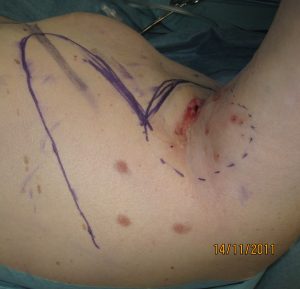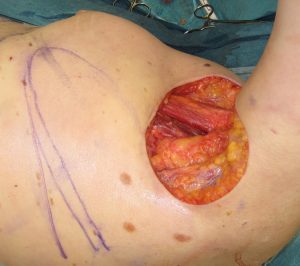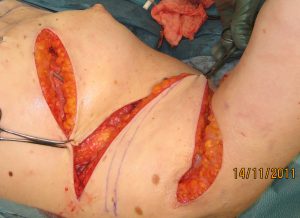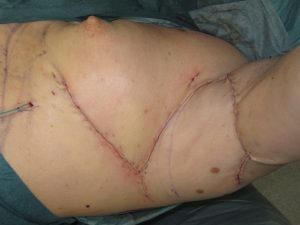Malignant Ulcer of the Axilla
History:
Nine years earlier the patient had undergone a partial left sided mastectomy with axillary lymph node dissection due to a15mm invasive lobular carcinoma, Nottingham grade II, hormone receptor positive, with1 out of 12 lymph nodes positive for tumor. Patient received radiation therapy 50 Grey in 25 fractions and Tamoxifen for 5 years. The patient later terminated her Tamoxifen treatment due to side effects. The patient also had well controlled Type 2 Diabetes, hypertension and hypothyroidism. She presented with an ulcer of the right axilla of 8 months duration. The ulcer had not improved in spite of various local treatments.
Findings:
77 year old woman with a 6×2 cm ulcer in the left axilla. The ulcer showed what appeared to be hyper granulation.

Fig.1. Left armpit showing central ulcer surrounded by nodular skin lesions, highly suspicious of representing recurrent breast cancer.
Diagnosis:
Pathology report on punch biopsies showed recurrence of Invasive lobular carcinoma with multiple skin metastasis, hormone receptor positive, Ki67 25%.
Differential Diagnoses:
Workup Required:
Plan:
Expertise Needed:
Plastic Surgeon or surgeon with experience with local flaps.
Treatment:





